#Dorothy Dwan
Photo










dorothy dwan as dorothy gale in the wizard of oz (1925)
#this version is interesting to watch#dorothy dwan#dorothy gale#the wizard of oz#1920s#old hollywood#vintage#movies#filmedit#cinema#moviesedit#actresses#old films
96 notes
·
View notes
Photo
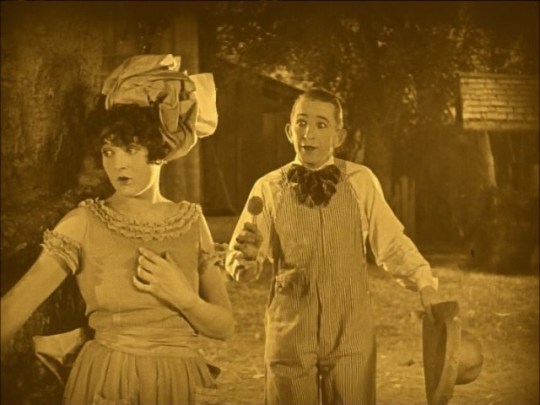
Dorothy Dwan and Larry Semon in Wizard of Oz (Larry Semon, 1925)
Cast: Dorothy Dwan, Larry Semon, Oliver Hardy, Spencer Bell, Charles Murray, Bryant Washburn, Josef Swickard, Mary Carr, Frank Alexander. Screenplay: Frank Joslyn Baum, Leon Lee, Larry Semon, based on a book by L. Frank Baum. Cinematography: Frank B. Good, Hans F. Koenekamp, Leonard Smith. Art direction: Robert Stevens. Film editing: Sam Zimbalist.
A critical and commercial flop that seriously damaged the career of its director and writer, Larry Semon, Wizard of Oz (as the on-screen title has it) somehow survived the mass extinction of silent films, perhaps because of the perennial interest in Oz stories. But only the most die-hard Oz fans need to bother checking it out: It's a hopeless mess, a mishmash of conventional slapstick comedy and rather lame fantasy. It features characters from L. Frank Baum's book: Dorothy (Dorothy Dwan), the Wizard (Charles Murray), the Scarecrow (Semon), and the Tin Woodman (Oliver Hardy). But it does nothing with them but place them in various kinds of comic jeopardy that usually climax in pratfalls. Much of the film takes place in Kansas, where Dorothy is a farm girl about to turn 18, an age when she can open a mysterious letter that was delivered to her Uncle Henry (Frank Alexander) and Aunt Em (Mary Carr) when she was a foundling infant. The letter, of course, reveals that she is Princess Dorothea of Oz. She is being courted by two farmhands, also played by Semon and Hardy, who are swept off to Oz by a tornado -- or rather just a strong windstorm, since there's no funnel cloud -- along with Dorothy and Uncle Henry, where they assume disguises: Semon swipes the clothes off of a scarecrow and Hardy improvises an outfit from a scrap heap. There's also a black farmhand known, inevitably, as Snowball, played by Spencer Bell under the pseudonym G. Howe Black. Get it? We first see him eating a watermelon, but aside from that, the racist humor is fortunately kept to a minimum. In Oz, to which Snowball is somehow chased by lightning, he adopts a lion costume, creating the third in Dorothy's familiar trio of companions. The scenario was written by Semon, Leon Lee (who also wrote the intertitles), and Frank Joslyn Baum, credited as "L. Frank Baum Jr." Frank J. Baum's efforts to capitalize on his father's name led to a break with the rest of his family.
1 note
·
View note
Text
The Great K & A Train Robbery (1926)
The Great K & A Train Robbery is a 1926 American silent Western film directed by Lewis Seiler and starring Tom Mix and Dorothy Dwan.
The film is based on the actual foiling of a train robbery by Dick Gordon as related by Paul Leicester Ford in his book The Great K & A Train Robbery originally published as a serial in Lippincott’s Monthly Magazine in…
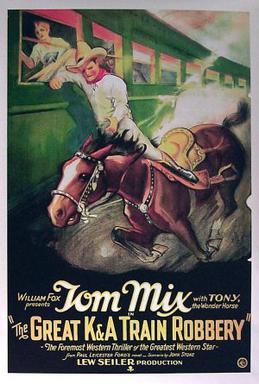
View On WordPress
0 notes
Text
Lost, but Not Forgotten: What Price Beauty? (1925)
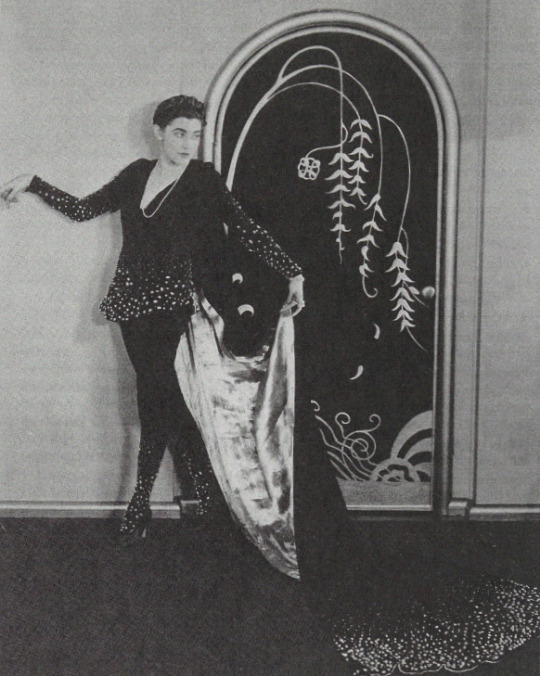
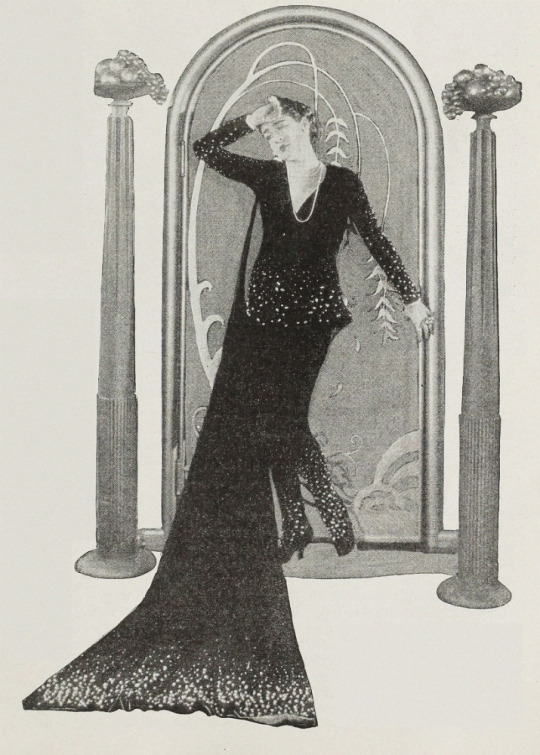
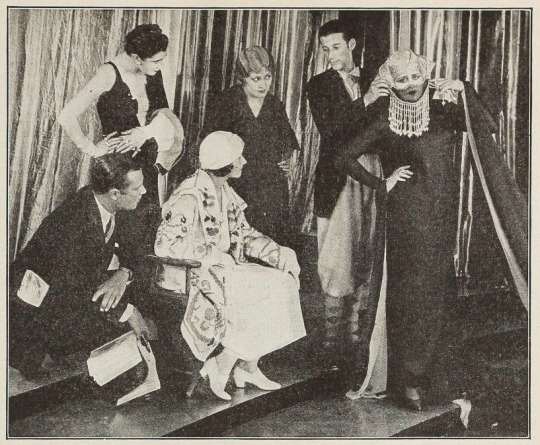
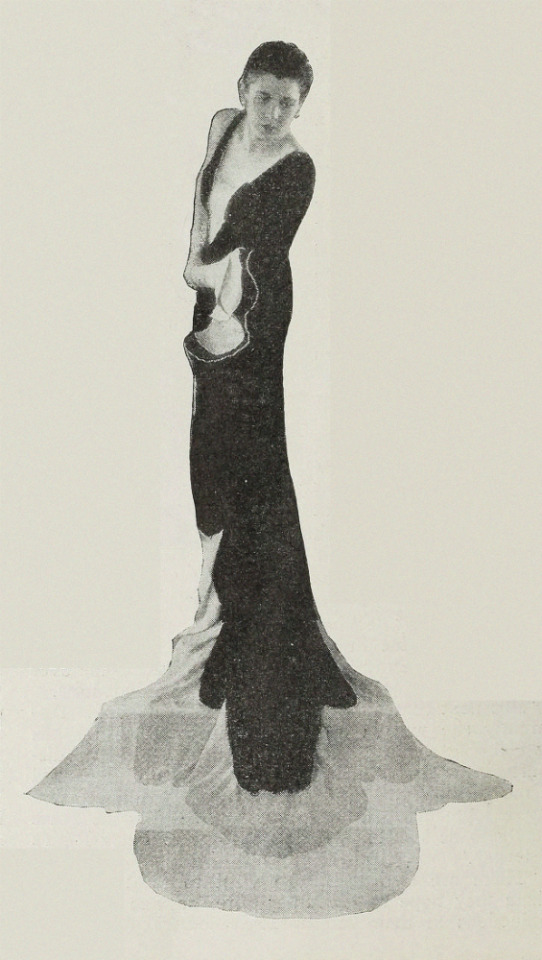
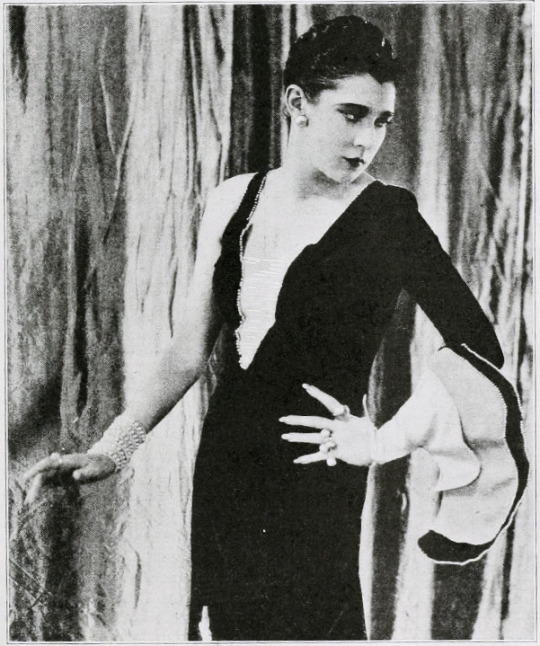


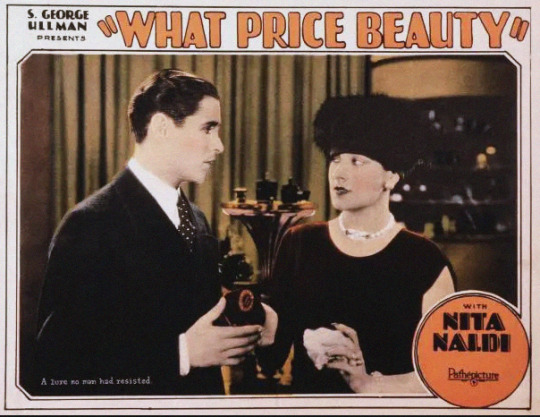



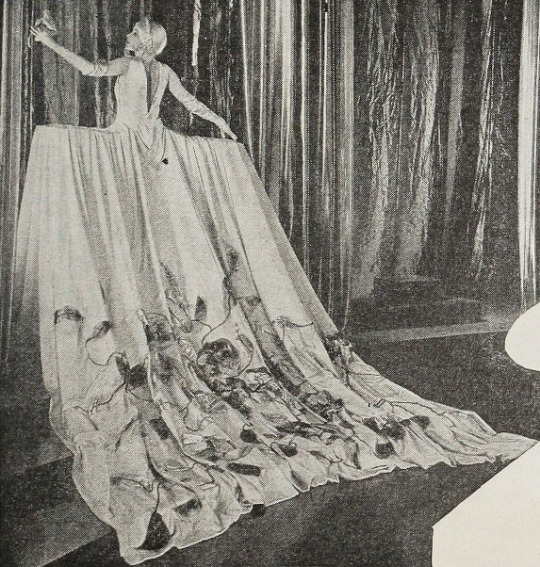
Direction: Thomas Buckingham
Scenario & Story: Natacha Rambova
Titles: Malcolm Stuart Boylan
Production Manager: S. George Ullman
Camera: J. D. Jennings
Art Direction: Natacha Rambova
Production Design: William Cameron Menzies
Costume Design: Adrian
Studio: Circle Films (Production) & Pathé Exchange (Distribution)
Performers: Nita Naldi, Pierre Gendron, Virginia Pearson, Dolores Johnson, Myrna Loy, Sally Winters, La Supervia, Marilyn Newkirk, Victor Potel, Spike Rankin, Rosalind Byrne, Templar Saxe, Leo White Maybe: John Steppling, Paulette Duval, Dorothy Dwan, and Sally Long
Premiere: None, general release: January 22, 1928
Status: Presumed entirely lost.
Length: Variously reported as 5000 and 4000 feet (more commonly listed as 4000) or 5 reels
Synopsis (synthesized from magazine summaries of the plot):
Mary, a.k.a. “Miss Simplicity” (Dolores Johnson) is a starry-eyed, country-to-city transplant. She works at a beauty shop operated by a glamorous matron (Virginia Pearson) and owned by the young and handsome Clay (Pierre Gendron).
Mary is in love with Clay, but doesn’t have the nerve or feminine wiles to woo him. The uber-sophisticated Rita (Nita Naldi), however, is chock full of nerves and wile. Rita’s fancy clothes and perfumes and advanced flirting skills leave Mary feeling destined to fail at winning Clay’s amorous attention.
These feelings sublimate into an expressionistic dream for Mary, where she finds herself transformed into a sophisticate like Rita. Her boss is seen as a magnificent wizard, converting her clients into archetypes of glamour: exotic types, flappers, and sirens. Her competition, Rita, is seen as a bewitching spider.
In the end, surprising Mary, it turns out that her fresh-faced, unassuming charm is more appealing to Clay than Rita’s more practiced charm.
Additional sequence(s) featured in the film (but I’m not sure where they fit in the continuity):
Scene of the trials and tribulations of a fat woman trying to “reduce”
Points of Interest:
Only one quarter of Nita Naldi’s Hollywood films have survived (7 extant titles/21 lost or mostly lost titles).
——— ——— ———
What Price Beauty? was the first and only film produced under Natacha Rambova’s own company. Coordinating production for the film was the business manager for Rambova and her husband Rudolph Valentino, S. George Ullman. The couple met Ullman when he was working for Mineralava beauty products, the sponsor of their 1922-3 dancing tour.
When Rudolph Valentino entered into a contract with United Artists, said contract reportedly stipulated that Valentino-Rambova were not a package deal. Therefore, Rambova could not collaborate with Valentino on his productions for United. Possibly as consolation, Ullman funded a production for Rambova while Valentino worked on The Eagle (1925, extant).
For Rambova, What Price Beauty? was meant to be a proving ground for her idea that an artistic film could be made on a modest budget. She also wished to remind people that she was a skilled artist in her own right.
In an interview in Picture Play Magazine from August 1925, Rambova asserts:
“…I do not want the production in any sense to be referred to as high-brow or ‘arty’. My reputation for being ‘arty’ is one of the things that I have to live down, and I hope by this picture, which is a comedy—even to the extent of gags and hokum—to overcome that idea.
“A woman who marries a celebrity is bound to find herself in a more or less equivocal position, it seems, and her difficulties are only increased when she happens to have had some artistic ambitions of her own before her marriage. I am afraid that those who have accused me of meddling in my husband’s affairs forget that I enjoyed a certain reputation and a very good remuneration for my work as well before I became Mrs. Valentino.”
“What I desire personally is simply to be known for the work which I have always done, and that has brought me a reputation entirely independent of my marriage.”
There isn’t a vast amount of information on what exactly prevented WPB from gaining release in a timely fashion. If the film was truly nothing more than a ploy to separate Rambova from Valentino, that would be an absurd waste of time, money (~$80,000 in 1925 USD), and talent—Rambova employed soon-to-be famous designer Adrian for costumes and William Cameron Menzies for set decoration. Not to mention that, in front of the camera, Nita Naldi was still a popular star and the Rambova discovery, Myrna Loy, made her quickly hyped debut.

When Pathé finally purchased WPB for distribution in 1928, they did very little to promote the film. Naldi had moved on from the film industry—as had Rambova. And, while Loy hadn’t become the huge star we know today by January of 1928, Warner Brothers had already given her top billing in a number of films. Pathé barely mentions Loy’s role in the little promotion they did do.
To put WPB’s release in the context of Rambova’s personal/professional biography (which you can read more about here):
June/July 1925 – WPB is completed, Rambova and Valentino separate (in July according to Rambova’s mother as quoted in Rambova’s book Rudy)
August 1925 – Rambova leaves Hollywood for New York City, reportedly to negotiate distribution for WPB. She and Valentino would see each other in person for the last time. Rambova leaves NYC for Europe.
September 1925 – Valentino draws up a new will disinheriting Rambova
November 1925 – Rambova returns to the US to act in a film, When Love Grows Cold (1926, presumed lost), a title which Rambova objected to
December 1925 – Rambova files for divorce
August 1926 – Valentino dies
January 1928 – WPB is finally released with no fanfare by Pathé
In my research for my Rambova cosplay, the suspicious production/release history for this film stood out to me. I hoped that I might find some reliable evidence of whether WPB was a consolation prize and/or a scheme to keep Rambova and Valentino apart. Honestly and unfortunately, circumstantial evidence does support it!
After poring over what few contemporary sources cover WPB, there seemed to be no plan in place for distribution as the film was in production. United Artists, at whose lot the film was shot, claimed to have nothing to do with its release. Ullman had a news item placed about negotiating the distribution rights in the East. However, in Ullman’s own memoir, he admits that when he travelled to New York with Rambova, it was in a personal, not professional capacity—navigating the couple’s separation. (Ullman’s book contains many disprovable claims and misrepresentations, so anything cited from it should be taken with a grain of salt.) That said, Ullman’s failure to secure even a modest distribution deal for WPB in a reasonable timeframe speaks to how ill-founded Valentino’s and Rambova’s trust in his business acumen was.
WPB cost $80,000 to produce, which converts to $1.4 million in 2023 USD. While that wasn’t an outrageous budget for a Hollywood feature film at the time, especially one with such advanced production value, it’s certainly an absurd cost if the goal was only to separate a bankable star from his wife and collaborator.
A close friend and employee of Valentino and Rambova, Lou Mahoney, recalled in Michael Morris’ Madam Valentino:
“The picture was previewed at a theater on the east side of Pasadena, and Mahoney remembered the audience reaction as positive, but, thereafter, What Price Beauty? was consigned to oblivion. Mahoney knew why: ‘No help came from anyone, no thoughts of trying to get this picture properly released. No help came from Ullman, Schenck, or anybody else. Their whole thought was that if the picture were a success, Mrs. Valentino would be a success. She would then start producing under the Rudolph Valentino Production Company. But this nobody wanted—except herself, and Mr. Valentino.’”
——— ——— ———
The few reviews from 1928 that I was able to find are not very complimentary of WPB. The critics seem thrown by the film’s tone or genre—reading it as a drama. (Part of that is Pathé’s fault as they listed it as one.) But, according to sources contemporary to WPB’s production, it was intended to be a farcical satire of the beauty industry and social expectations of feminine beauty. Given the simple story, the intentional typage of characters (“The Sport,” “The Sissy,” and “Miss Simplicity”), and the over-the-top-but-on-a-budget art design of WPB, all signs point to high camp. In 1925 as well as 1928, the stodgier side of the critical spectrum would likely fail to see its appeal.
It’s a true shame we can’t find out for ourselves how good, bad, or campy WPB was as of yet, but here’s hoping the film resurfaces!
More about Rambova
GIFs of some of her design work on film
☕Appreciate my work? Buy me a coffee! ☕
Transcribed Sources & Annotations over on the WMM Blog!
#1920s#1925#1928#natacha rambova#nita naldi#cinema#silent cinema#american film#independent film#classic film#classic movies#film#silent film#silent movies#silent era#classic cinema#silent comedy#lost film#film history#history
24 notes
·
View notes
Text
SLIGHTLY SCARLET (Deux rouquines dans la bagarre) - Allan Dwan (1956)
L’adaptation de Love’s Lovely Counterfeit est assez éloignée du roman de James M. Cain où Dorothy apparaissait assez tard dans l’intrigue et devenait la maîtresse de Ben. Dans le film, Ben reste fidèle à June mais Dorothy, bien que moins importante du point de vue du récit, reste pourtant le personnage le plus intéressant : névrosée, imprévisible, capricieuse et d’une immoralité fascinante. Sans…

View On WordPress
1 note
·
View note
Text

Larry Semon as the Scarecrow, Dorothy Dwan as Dorothy Gale and Oliver Hardy as the Tin Man in The Wizard Of Oz (1925).
0 notes
Text
youtube
The Wizard of Oz (1925) / Silent fantasy-adventure comedy film / Larry Semon, Dorothy Dwan
0 notes
Photo

Dorothy Dwan - By Edwin Bower Hesser (1920′s)
(No.6)
#dorothy dwan#by edwin bower hesser#1920's#silent screen beauty#petite soulful-eyed leading lady of the silent screen#best remembered for her role as dorothy in the original silent version of the wizard of oz (1925)#cropped photo#vintage b/w photography#silent hollywood
75 notes
·
View notes
Text

Dorothy Dwan ❤
25 notes
·
View notes
Photo

Dorothy Dwan, 1926 Melbourne Spurr :: Dorothy Dwan. Motion Picture Classic, April 1926 issue. | src archive.org
#1920s#1926#dorothy dwan#flapper style#melbourne spurr#motion picture classic#MPC#portrait#portraying
29 notes
·
View notes
Photo


the great k & a train robbery (us, seiler 1926)
5 notes
·
View notes
Text

Dorothy Dwan
#dorothy dwan#vintage#vintage photography#silent actress#silent film#silent cinema#beauty#depression era
1 note
·
View note
Photo

Dorothy Dwan, 1924
#1920s#roaring 20s#jazz age#history#flappers#flapper#rolled stockings#historic#vintage#20s fashion#1920s fashion#dorothy dwan#1924#photos#actress
262 notes
·
View notes










